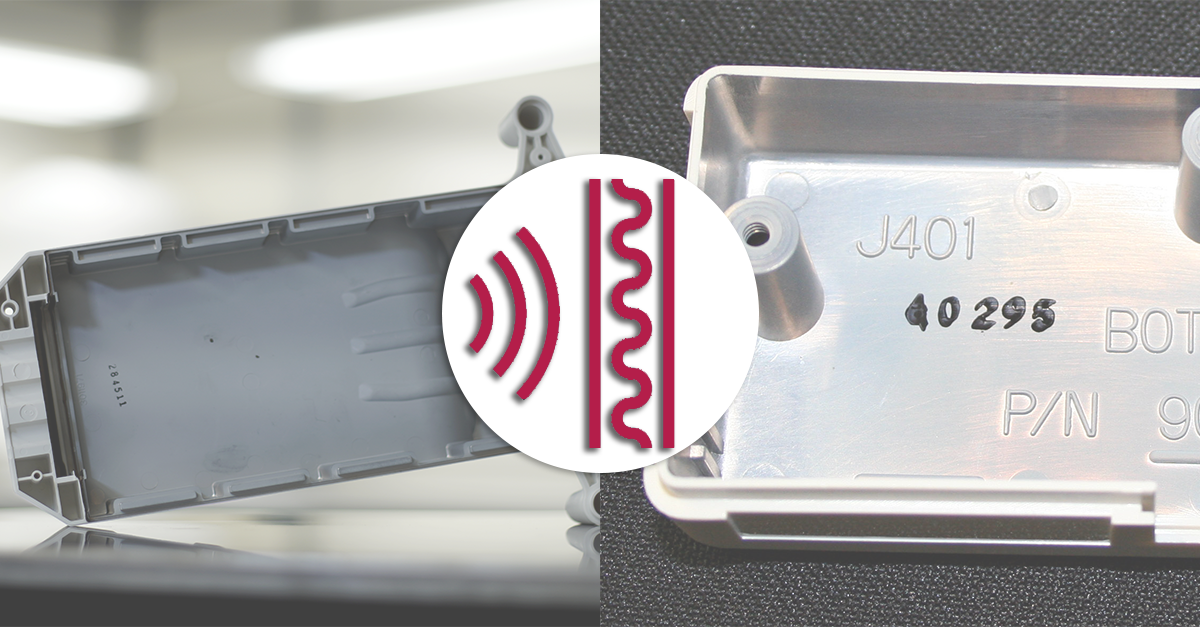Electrical devices are inextricably intertwined with nearly every aspect of our lives. From smartphones to medical devices, they pervade the world around us and require incredibly precise electronic components to function. But with millions of these devices in use, it’s essential to ensure that their emissions don't interfere with each other and cause electromagnetic interference (EMI) that can affect their performance.
Electromagnetic interference causes everything from slower data speeds to system failures. That’s why EMI shielding for plastic parts has become essential in manufacturing electrical device parts. But what is EMI shielding, and how is it used in plastic parts?
This article will explain EMI shielding basics, when it's used, the types of EMI shielding techniques and materials used, and how Crescent Industries' complete custom injection molding services can help if your plastic component or device requires this process.
Understanding EMI Shielding for Plastic Parts
If you searched “What is EMI shielding?”, you're likely familiar with the basics of electromagnetic interference; it's an unwanted form of energy that can disrupt the normal operation of electronic devices. It's generated by multiple sources such as power lines, motors, generators, and even your own body.
EMI shielding is a process that prevents sensitive electrical components from being affected by electromagnetic interference or radio frequency interference. It involves wrapping the device in a protective material that blocks electromagnetic radiation from interfering with its parts. This material is typically made of metals, but other materials, such as plastics treated with special coatings, can also be used. EMI shielding is significant for plastic parts that protect sensitive internal components, such as computed tomography (CT or CAT), magnetic resonance imaging (MRI), military communication devices, etc.
Plastic injection molded parts to house electrical devices might require EMI shielding to prevent interference from outside sources. In addition, specific medical and defense applications may require EMI shielding, as interference can lead to serious medical issues or mission failure. EMI shielding plastics typically involves the addition of a metal coating to the external plastic layer, which serves as an EMI barrier.
When is EMI Shielding Used on Plastic Injection Molded Parts?
Typically, EMI shielding is used on electronic equipment and components vulnerable to interference from external sources, such as cell phones, magnetic materials, and other wireless devices. It’s vital for applications where interference can lead to serious harm or malfunctioning the device.
EMI shielding occurs in the final stages of the injection molding process when a metal coating or conductive materials are applied to the plastic part. It is part of the finishing process and essential for ensuring the device performs as designed.
Adding a metal layer to the external surfaces of the part serves as an EMI barrier, preventing interference from hindering the device's performance. This can be critical in cases where the device requires a high degree of precision, such as in the medical equipment and defense industries. For instance, a plastic injection molded pacemaker or defibrillator must have reliable EMI shielding to ensure it won’t malfunction due to interference.
Electromagnetic Interference (EMI) Shielding — How it Works.
Now that you know what EMI shielding is, let’s look at how it works. In essence, it creates an electromagnetic barrier around the device that blocks radio waves from interfering with its operation. You can do this by wrapping the device in a material that disrupts the electromagnetic field so that it cannot interfere with its internal components. This material works by reflecting and absorbing the radio frequencies away from the device through a ground connection, meaning all interfering signals will be blocked before they can cause harm.
Electrolytic Vs. Electroless Plating
Electrolytic plating is a type of EMI shielding that submerges the plastic part into an electrolyte solution and applies an electric current. This process attracts metal ions from the solution and deposits them onto the piece, forming a metal layer on its surface. The metals act as a barrier, reflecting and absorbing the radio frequencies that would otherwise interfere with the part's performance.
Electroless plating is another type of EMI shielding. It’s similar to electrolytic plating in that it involves the deposition of metal ions onto the part’s surface. However, it differs in that it does not require an electric current. Instead, a chemical reaction attracts the metal ions from the solution and deposits them onto the part. This process is more complex than electrolytic plating and requires greater precision. However, you can use it to achieve a higher level of protection from interference.
Types of Shielding Materials Used
The type of EMI shielding materials used depends on various factors, such as the application, level of protection required, and range of temperatures. Metal is typically used for EMI shielding, as it is highly reflective and provides the most reliable protection from electromagnetic interference. However, you can use other materials like metal foam, silicone, and polymer composites.
Types of EMI Shielding
EMI shielding is typically divided into two categories: conductive and absorptive.
- Conductive EMI shielding involves using metals or metal-coated plastic to create a grounded enclosure for electronic components. This type of shielding works by providing an electrical barrier between the source of the EMI and the sensitive components, blocking any EMI from entering the device.
- Absorptive EMI shielding involves using materials like foam or metal-coated rubber to absorb EMI. This shielding works by absorbing and dissipating the radio waves from the source of EMI, preventing it from reaching and affecting the sensitive components.
Our Integrated Custom Injection Molding is the Solution
Need a full-service custom injection molding solution that provides post-processing solutions to finish your project? Then, Crescent is the perfect partner to make it happen. Our advanced engineering capabilities are at the core of all our processes. With our integrated, single-source solution, we'll cover you from design to production, offering the services your project requires for completion. For more information on all post-processing operations available read this article.
Resources
https://muellercorp.com/coating-plastic-why-plastic-components-may-need-emi-shielding/
https://www.sharrettsplating.com/blog/emi-shielding-plastic/
https://www.com-power.com/blog/emi-shielding-an-overview
https://www.zippertubing.com/blogs/engineers-knowledgebase/what-you-need-to-know-about-emi-shielding


